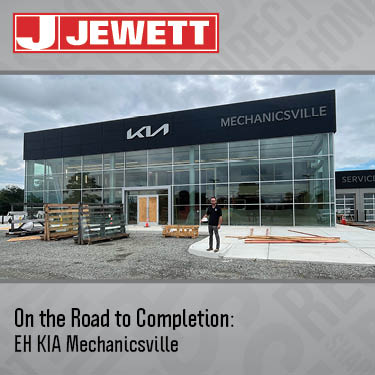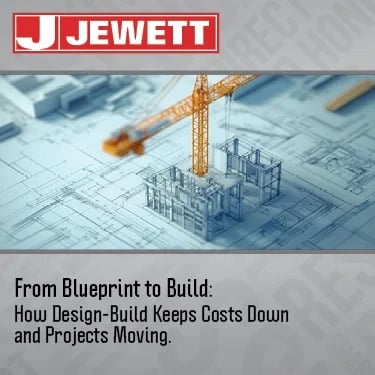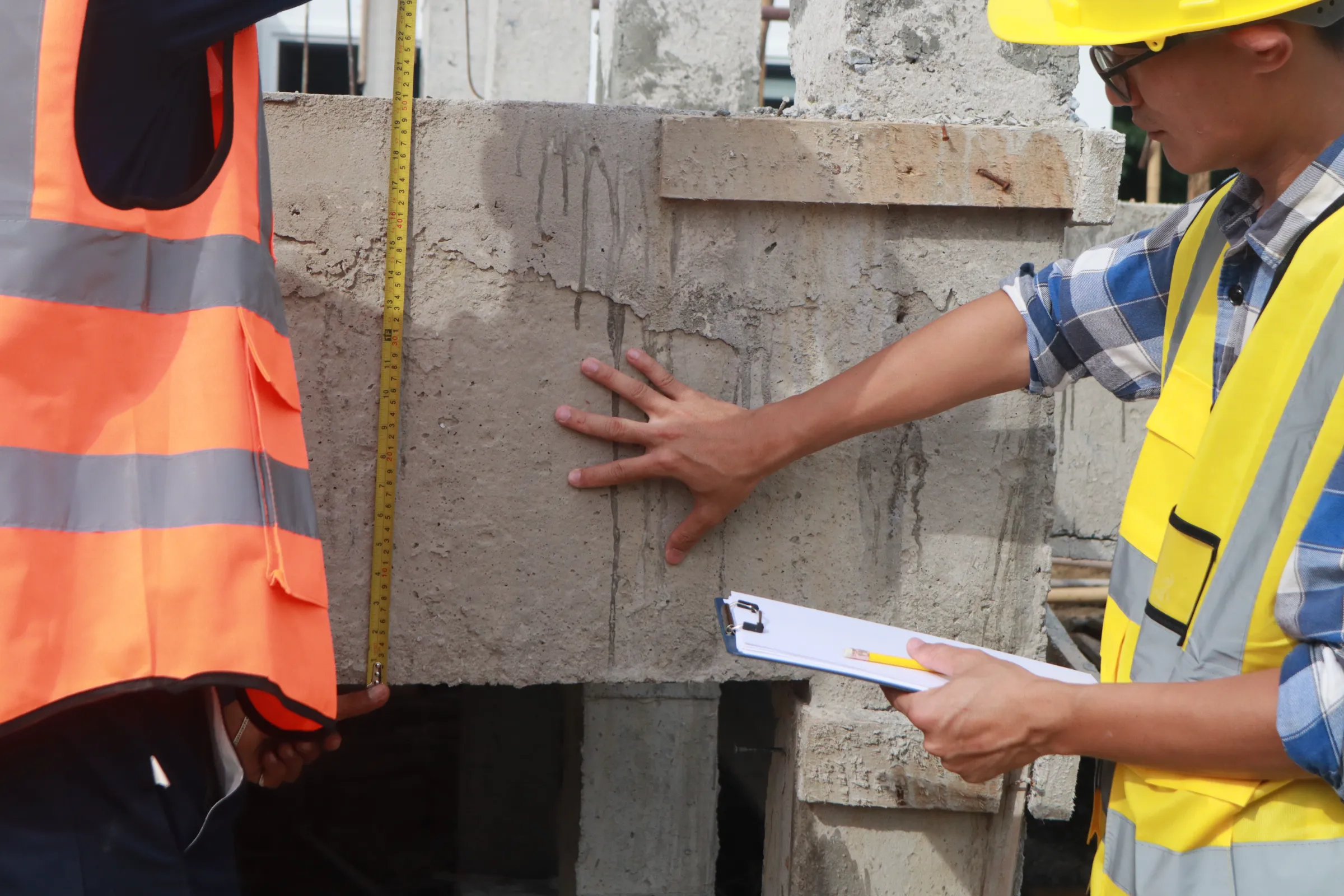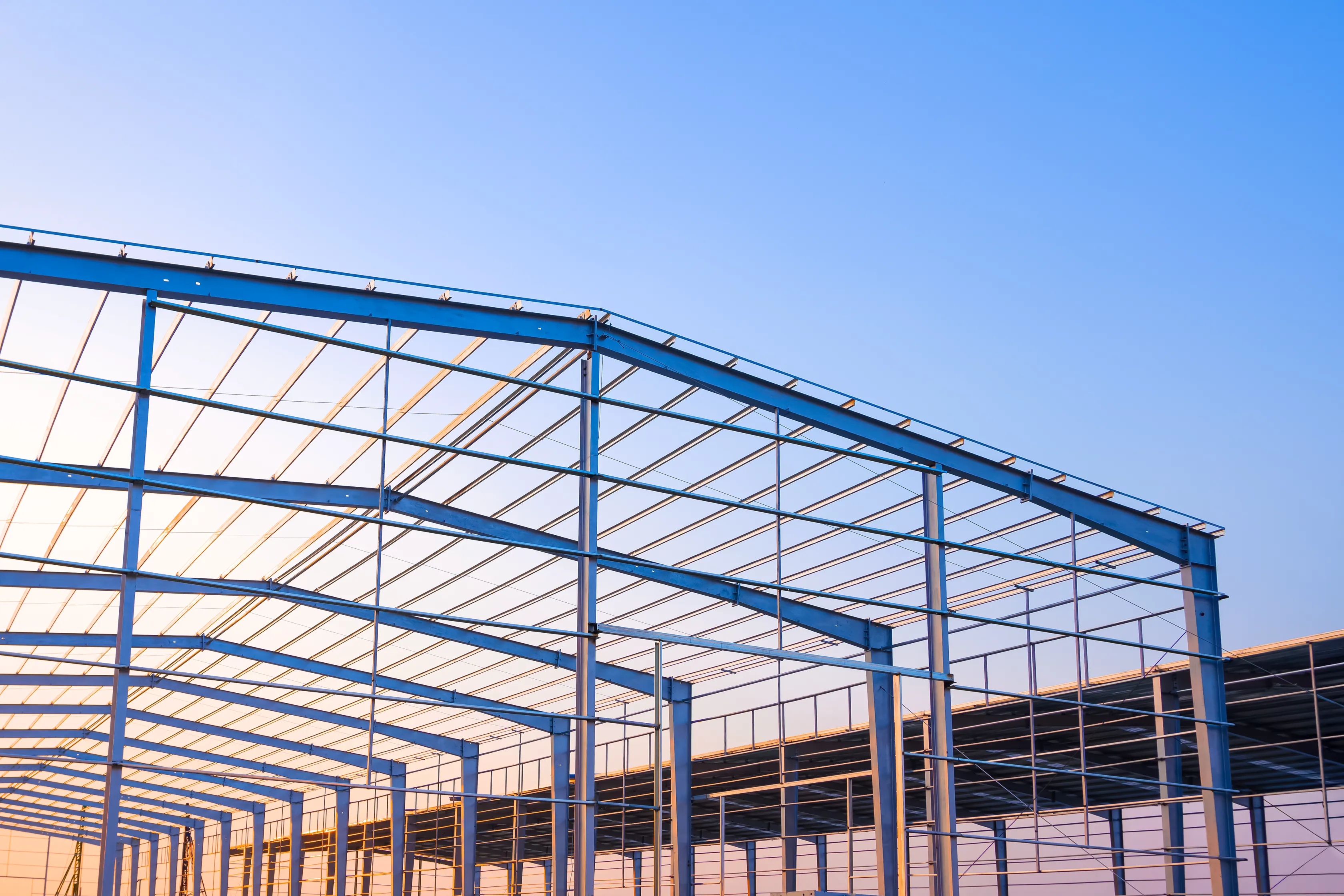Commercial Construction Project Planning: Essential Steps for Success with Jewett Construction
Effective planning forms the backbone of any successful commercial construction venture. Even a highly skilled workforce can encounter needless setbacks—such as blown budgets or misaligned designs—if a strong plan isn’t in place from the beginning. At Jewett Construction, we emphasize meticulous coordination and in-depth preparation to ensure every project, regardless of scale or industry focus, achieves its core objectives. This blog outlines the critical phases of well-structured project planning and explains how Jewett Construction’s method positions each build for success.
1. Clarifying the Project Vision
The first step toward a well-rounded construction plan is understanding what success looks like for the owner or organization. Whether expanding an existing facility to accommodate a growing workforce, modernizing a retail space for better customer flow, or creating an entirely new structure to satisfy unique operational requirements, clarity is essential. Jewett Construction encourages clients to define both performance and aesthetic goals from day one.
These goals inform various decisions—like structural layouts, finishing materials, or specialized system integrations. For example, a distribution center that must handle heavy equipment might require floors with higher load capacities and ample clearance for machinery. A public-facing showroom could prioritize an open design and visually appealing finishes to enhance customer experience. By spotlighting these aims early, the entire planning process aligns around the result the client truly wants.
2. Creating a Realistic Financial Framework
Constructing a commercial building often involves sizable financial commitments. A transparent, accurate budget serves as the project’s financial guidepost. Without clear cost parameters, it’s easy to overspend on items that don’t add meaningful value or to underfund critical features that affect long-term usability. Jewett Construction collaborates with owners to strike a balance between envisioned outcomes and available funds.
In many instances, the budget-building process considers labor rates, local permitting fees, the complexity of HVAC or electrical systems, and the potential costs of unexpected site conditions. Drawing from both historical data and up-to-date market information helps refine cost estimates. This diligence lowers the risk of costly mid-project changes that could disrupt the build or require difficult compromises later.
3. Examining the Construction Site Thoroughly
Every plot of land or existing building brings its own variables—geological features, utility setups, environmental sensitivities—that can shape a project’s outcome. Comprehensive site assessments uncover these details early, giving the planning team insight into potential complications. Soil reports, hydrological surveys, and utility scans illuminate whether extra structural supports might be necessary, or if drainage improvements are required to manage runoff.
By embedding these evaluations into the broader plan, Jewett Construction ensures the construction approach aligns with the site’s realities. Addressing site-based constraints at this stage prevents future redesigns and sets the foundation for a structurally sound, code-compliant building.
4. Gathering Key Contributors and Stakeholders
Commercial projects typically involve multiple people—clients, architects, engineers, subcontractors, and sometimes local officials for inspections and permits. Miscommunication among these groups can lead to delays or cost overruns. Effective planning instills a framework where each participant understands their role and has access to crucial information from the project’s earliest phase.
Jewett Construction coordinates collaboration using scheduled meetings and digital communication platforms. These tools allow timely dissemination of design updates, budget adjustments, or regulatory issues that need swift attention. When team members remain in sync, decision-making improves, duplication of work decreases, and stakeholders stay confident in the path forward.
5. Building a Detailed Timeline
Scheduling intricacies can make or break a commercial construction job—time truly is money in this industry. A rigorous timeline clarifies which tasks take priority, when specialized contractors must arrive, and how seasonal weather patterns might affect exterior tasks. Jewett Construction constructs a critical path schedule that highlights dependencies and crucial milestones, such as finishing foundational work or installing essential mechanical systems.
This level of detail enables proactive planning. If a shipment delay impacts one phase, the project team can shuffle tasks so productivity remains high. Milestones also serve as performance checkpoints, indicating whether the build is still on pace or whether corrective action is needed. Constantly revisiting and refining the schedule helps keep everyone aligned—no guessing about what happens next.
6. Securing Approvals and Permits
Commercial buildings must comply with a tapestry of local, state, and sometimes federal regulations. Regulatory requirements can span zoning stipulations, environmental protections, or specialized health and safety standards. Jewett Construction identifies necessary permits during the planning phase and compiles all the requisite documents or drawings for submittal.
If the industry in question has extra layers of compliance—like a food-processing plant that needs sanitary certifications—the planning process ensures those aspects are accounted for in the overall design and timeline. Tackling permitting proactively reduces the risk of project slowdowns or legal challenges once construction starts.
7. Emphasizing Value Engineering
Value engineering aims to optimize the project so the final outcome fulfills its essential functions with minimal waste and cost. By investigating materials, construction techniques, and layout efficiencies, the team can often pinpoint more economical or durable solutions that don’t sacrifice the project’s quality.
For instance, specifying more robust flooring materials might yield better durability under heavy equipment, preventing early repairs. Or exploring energy-efficient lighting systems could mean lower long-term operating costs. By discussing these options in the planning stages, Jewett Construction helps ensure the final design meets both performance targets and budget constraints.
8. Addressing Potential Risks Early
Risk is inherent in construction—inclement weather, shifting material prices, labor shortages, or sudden design changes can all disrupt progress. That’s why it’s crucial to acknowledge these “what ifs” before building begins. Jewett Construction’s planning process includes identifying threats—both financial and operational—and devising mitigation strategies.
Potential steps might involve scheduling critical outdoor work during milder seasons, arranging alternative suppliers, or including contingency funds in the budget. When the project team prepares for plausible setbacks early, the overall build remains more resilient, and negative impacts on budget or deadlines can be minimized.
9. Cultivating a Supportive Team Environment
A commercial build can only run smoothly if stakeholders trust each other and communicate openly. Jewett Construction promotes a respectful, problem-solving mindset from the outset. Designers receive timely input from engineers, while clients can freely raise questions about budgeting or design details. Subcontractors, in turn, feel comfortable flagging practical concerns or potential bottlenecks.
This atmosphere of support and mutual respect means that when a challenge appears later—like an on-site discovery that conflicts with initial drawings—team members propose solutions instead of pointing fingers. By enshrining collaboration as a core principle during planning, the entire process becomes more adaptive and less prone to breakdowns in communication.
10. Harnessing Modern Planning Tools
Innovative technologies give planning teams greater accuracy and real-time oversight than ever before. Jewett Construction incorporates tools such as Building Information Modeling (BIM) to uncover design conflicts early and to visualize complex mechanical or electrical systems. Cloud-based management platforms track tasks, expenses, and documents in a centralized repository, making updates readily accessible.
Adopting these technologies in planning helps identify potential inconsistencies between different trades. For instance, BIM can pinpoint where a ventilation duct might occupy the same space as electrical conduit—an issue easier resolved on a screen than on an active jobsite. Having these digital aids ensures each step is anchored in up-to-date and accurate information.
11. Smoothly Transitioning to On-Site Work
No matter how comprehensive a plan is, it must flow seamlessly into execution mode. Jewett Construction ensures that all documentation—final design specs, itemized budgets, compliance notes—transfers to project managers without confusion. This continuity allows on-site teams to follow a blueprint that has been vetted and agreed upon, reducing the learning curve and reinforcing accountability.
In practice, this means handing off a well-structured schedule, a complete set of drawings (including any pre-detected clash resolutions), and a clear chain of command for decision-making. Since planners and site managers collaborated closely from the beginning, ground crews can hit the job running on day one.
12. Adapting the Plan as Needed
Even the most carefully laid strategy might encounter unforeseen variables—like a sudden price hike for steel or changes to municipal ordinances. Effective planning, therefore, doesn’t end when the excavators arrive. Jewett Construction continuously assesses evolving factors and, if necessary, revises tasks or reallocated budgets to keep the build aligned with client priorities.
This agile mindset prevents project shocks from ballooning into full-blown crises. For instance, if a late material shipment threatens the critical path, the team can rearrange tasks or expedite a different activity to maintain forward momentum. By treating the plan as a living framework, we preserve the project’s overarching goals amid real-world shifts.
13. Ensuring Longevity and Future Flexibility
A thoughtful plan anticipates not just immediate construction but also how the facility might evolve over time. Jewett Construction’s planning approach often includes potential expansions, technology upgrades, or interior reconfigurations—particularly beneficial for businesses expecting to scale. By integrating these options upfront, the structure can adapt more easily without major retrofits in the coming years.
Additionally, planning for energy efficiency or resilient building materials from the beginning can save money down the line. These decisions reflect an owner’s long-term vision, ensuring the final edifice remains competitive and functional well after its grand opening.
14. Cultivating Trust Through Transparency
Clients rightfully want visibility into how each dollar is spent and how each milestone is tracked. Jewett Construction commits to open communication throughout the planning phase. Cost estimates, timelines, and potential risks are shared candidly. This level of honesty fosters a sense of partnership rather than a transactional dynamic.
In turn, stakeholders are more likely to raise questions or offer suggestions that refine the plan. If cost concerns arise, the team can proactively investigate alternate materials or construction techniques. This collaborative transparency paves the way for smoother execution and more satisfied clients.
15. Conclusion: Planning as the Foundation for Success
In commercial construction, strong planning is indispensable. By specifying objectives, establishing an accurate budget, analyzing site conditions thoroughly, and setting up clear schedules and lines of communication, Jewett Construction ensures that each project is primed to meet its goals. Meticulous coordination with stakeholders, flexible risk management, and modern planning tools all reduce the chance of setbacks and keep the build operating efficiently.
At Jewett Construction, this planning mindset goes beyond the short term. Our comprehensive approach aims for facilities that meet today’s requirements and can evolve with tomorrow’s demands. If you’re considering a new build, expansion, or renovation, connect with Jewett Construction. Our integrated planning services will help you minimize guesswork, manage budgets wisely, and realize a commercial space that stands the test of time.








